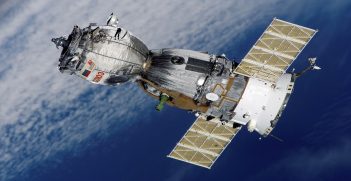Regulating Space to Boost Australian Opportunity

The recently announced Australian space agency opens a new frontier for opportunity but the country must prepare its legislation for the journey into outer space.
It has been 60 years since, on 4 October 1957, the Soviet Union successfully launched Sputnik 1, the first human-made space object to orbit the Earth. The period since that time has seen the continuous and seemingly endless development of space-related technology.
Space, and its utilisation, has become an increasingly important domain incorporating many political, legal, scientific, economic and humanitarian considerations. The conduct of our daily lives would in many respects be dramatically curtailed without constant and unimpeded access to space-related technology, and this imperative is likely to become even more pronounced for future generations.
Yet, despite all of these developments, the existing international legal and regulatory regime in relation to the exploration and use of outer space, has not kept pace with the remarkable technological and commercial progress of space activities since 1957. One of the characteristics associated with the rapid development of space technology is that comprehensive standards of regulation cannot easily be specified in advance.
Simply put, if we do not fully understand the technology and the risks and consequences associated with its use then further uncertainties and risks often result from attempting to regulate for the unknown.
It is in this context that national space law has becoming increasingly important, not only because it can regulate non-state actors in space—which now represent a significant proportion of those engaged in space activities—but also because of the glacial speed of regulatory updates at the international level.
Encouraging commercialisation
In 2015, the global space economy—comprising launch and ground services, satellite manufacturing, satellite television and communications, government exploration, military spending and other interests—was valued at approximately USD$323 billion (AUD$420 billion). Commercial space activities for that year were estimated to represent approximately 76 per cent of that amount and it is anticipated that this proportion will increase.
Australia has a long heritage in space-related activities and has made several significant contributions since the early development of humankind’s endeavours in space. Factors such as its technical expertise, geographic location and long and close alliances with various other space-faring countries has meant that it plays an important role in tracking and communications activities involving all manner of space objects.
Not only is Australia highly dependent on access to space-related technology and space data but, in common with other major industrialised countries, its private and research sectors are actively engaged in many areas associated with space-related industries.
The direct involvement of Australian private entities and research institutions in the development and application of space-related technology also contributes to the Australian space economy. Equally significant are the upstream and downstream impacts that these activities have for other sectors of the broader Australian economy.
In 1998, Australia passed legislation—the Space Activities Act—to regulate what was considered at the time to be a major opportunity for the development of an indigenous launch services industry. For various reasons, this industry did not eventuate. However, Australian entities and the government remained active in a number of other space-related activities. In the interim, as the technology has developed, many believe that further commercial opportunities for Australia and Australian are available, thus requiring the government to consider how the existing legislative framework might be reviewed or reformed to be more enabling for potential space actors.
Australia’s legal approach to space
On 24 October 2015, the Minister for Industry, Innovation and Science, Christopher Pyne, announced that the department would conduct a staged review of the Act, incorporating consultation with governments, researchers, industry and the public. The review was conducted with the assistance of the author and included a series of recommendations and options for government.
These recommendations were centred on the desirability of reducing both the administrative and bureaucratic aspects of licence application, as well as the financial costs associated with it. This particularly took into account that, due to the changing nature of space-technology in the Australian sector, those seeking a licence to engage in a space activity would not necessarily have the ability to provide the then-required level of financial comfort to the government to cover its contingent liability under the Liability Convention.
Following the submission of the report, the government undertook a further series of internal discussions and, in March 2017, published an Issues Paper in which it summarised the findings of the review and put forward a series of reforms of the national legislative framework for civil space activities. This indicated a shifted in thinking from an amendment to the existing legislation to the development of new legislation to replace and ‘upgrade’ the framework. It is anticipated that a bill will be put forward to the federal parliament in 2018.
In addition, on 13 July 2017, the Australian government announced a review of Australia’s space industry capability with a goal of allowing the country “to capitalise on the increasing opportunities within the global space industry sector”. An Expert Reference Group (ERG) was established to undertake this review, which will be completed by the end of March 2018.
The review will specifically address the following matters:
- Identifying Australia’s current industry capability and areas of comparative advantage for Australia to develop;
- Technologies and practices that promote innovation in both the downstream (users of space technologies) and upstream (providers of space technologies) elements of space activities, particularly in areas of niche capability and competitive advantage;
- Australia’s level of regional engagement and international collaboration, including identifying critical future and existing partnerships;
- Identifying capability gaps to support the global competitiveness of Australian firms in the civil space sector;
- Strategies to promote Australian firms engaged in the civil space sector, both domestically and internationally;
- Risks and opportunities, including ongoing access to space data and associated infrastructure essential to our national interests;
- Alignment with other sectors and Australian government priorities, including defence and cyber security, and meeting Australia’s international obligations; and
- The most effective institutional arrangements to support the strategic direction of Australia’s space industry.
Following on from a preliminary report after the various consultations undertaken by the ERG, the Australian government announced at the start of the International Astronautical Congress in Adelaide in late September 2017 that it would be establishing a space agency.
All of these measures indicate that the government recognises the economic, societal, commercial and competitive value that an effective, vibrant and responsive space industry can add to the country. This is vital for any economy if it is to put itself in a position where it both remains competitive in a globalising technological world and also encourages and enables maximum commercial (and other) benefits to accrue from space activities. It is therefore encouraging to see the establishment of these processes in Australia and the changes and reforms that will ultimately flow from them.
Steven Freeland is Dean of the School of Law and Professor of International Law at Western Sydney University. He is also a member of the Expert Reference Group that will review Australia’s Space Industry Capability.
This article is published under a Creative Commons Licence and may be republished with attribution.





